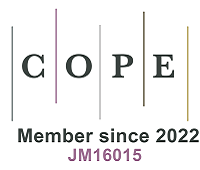Volume 5, Issue 2 (2025) – 20 articles
Cover Picture: The cyclability and reversibility of aqueous zinc-ion batteries (AZIBs) are severely hampered by the safety concerns arising from the Zn dendrite growth. Therefore, a stable anode with inhibited dendrites and side reactions is crucial for AZIBs. Herein, we utilized methyl acetoacetate (MA) as an additive to prevent dendrite growth and enable highly reversible Zn anodes. Benefiting from the nucleophilic groups (carbonyl groups) in MA, MA molecules can preferentially adsorb on the anode/electrolyte interface (AEI), forming a molecular protective layer. Such MA layers can not only regulate the migration and deposition of zinc ions, but also inhibit side reactions induced by the decomposition of free H2O molecules at AEI. Therefore, the symmetric cell with the addition of MA achieves a long-term cycling stability of 1,500 h at 2 mA cm-2 with a capacity of 2 mAh cm-2. In addition, the Zn//NVO full cell using MA-contained electrolyte demonstrates a high specific capacity (138.4 mAh g-1) with an outstanding capacity retention (92.8% after 600 cycles) at 1 A g-1. This work provides a principle for the use of ester-based additives with nucleophilic groups to suppress Zn dendrite growth for highly durable zinc metal anodes.
view this paper Back Cover Picture: Heterostructured materials, featured by two or more distinct zones with unique properties and intricate interactions at hetero-zone boundaries, showcase a remarkable strength-ductility synergistic effect for achieving superior mechanical properties surpassing their conventional homogeneous counterparts. Benefiting from the basic characteristics, such as complex composition, high configurational entropy and local distortion, multi-principal element alloys offer a fruitful playground for creating diverse heterostructures. Laser-based techniques such as laser surface treatment and laser additive manufacturing provide facile solutions with advantages such as high-energy density, rapid solidification rate, and precise control over processed zones and shapes, making them promising for the advancement of heterostructured multi-principal-element alloys. This review primarily highlights the nanoscale microstructural characteristics of various heterostructured multi-principal element alloys fabricated by laser-based techniques, along with their enhanced mechanical properties and other relevant service attributes. Moreover, it sheds light on the challenges and opportunities in harmonizing microstructural features to optimize the mechanical behavior of heterostructured multi-principal element alloys for industrial applications.
view this paper











